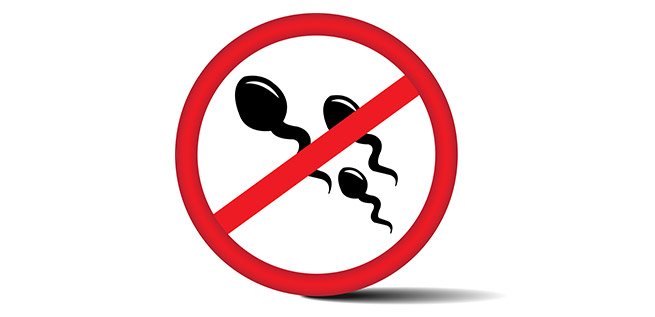“We’ve been trying to conceive for over a year we’re still not pregnant. Could it be my husband has a low sperm count or a no sperm count?”
Today, ~ 1% percent of the male population suffers from azoospermia (no sperm). However, advanced medical treatments offer hope. Don’t panic, let’s talk about azoospermia first.
What is azoospermia?
According to the Journal of Fertility and Sterility, azoospermia is the most severe manifestation of male factor infertility. It is a condition in which there is a complete absence of sperm in the ejaculate. The problem is also commonly referred to as ‘no sperm count’. According to the Johns Hopkins School of Medicine, azoospermia doesn’t necessarily mean that a man’s testis do not manufacture sperm. It means that the sperm do not make it into the ejaculate.
The American Society of Reproductive Medicine identified that about 1 percent of all men suffer from azoospermia, but in men seeking infertility treatment, the rate is 10 to 15 percent. In addition, the Stanford International Azoospermia Center reported that men who suffer from azoospermia are at a three-fold risk of developing cancer within 6 years after their initial semen analysis that diagnosed azoospermia.
What to look for in your ejaculate:
Whether the cause of azoospermia is congenital or develops later in life, there are no noticeable symptoms. Typically it is identified when couples seek medical help because they are unable to conceive despite having regular, unprotected sexual intercourse for a year or more.
Fertility experts at Male Fertility & Sexual Medicine Specialists advise their male patients to watch for symptoms of abnormal semen quality such as:
- Semen with an unusual colour quality—yellowish, greenish, red or brown tinted. In the last two instances, blood may be present in the semen.
- A thicker or thinner semen consistency.
- Ejaculate with a strong odour and/or has a low volume.
What tests are available?
Timely diagnosis is critical, especially if you have waited to start trying to conceive until you are 35 years of age or older. If you suspect a problem, men should have a semen analysis test to evaluate if his sperm count shows low or no sperm.
A fertility expert will probably want to perform two semen analysis to be sure of a diagnosis. If no sperm are seen initially, the semen is spun in a centrifuge to create a concentrated ‘pellet’. The spinning concentrates the sperm cells, making them easier to ‘find’ during analysis.
In addition to a basic sperm analysis, other diagnostic procedures may include a thorough physical examination, genetic screening, genital tract imaging and/or even a testicular biopsy.
As awareness about azoospermia grows, fertility specialists may also recommend a male hormonal assessment in order to understand whether the two primary cells (Sertoli cell and Leydig cell) in the testis are functioning effectively.
Yes, it’s azoospermia. Now what?
According to the Johns Hopkins School of Medicine, in patients diagnosed with azoospermia, there is a strong correlation between male infertility and abnormalities found in their semen and hormone dysfunction. So, once azoospermia is diagnosed, a fertility specialist may test for an underlying medical condition such as Klinefelter’s Syndrome.
Causes of azoospermia:
Why is there no sperm in the ejaculate? There are two types of azoospermia:
- Obstructive azoospermia: The testicles are producing sperm but they are not ejaculated because of either a blockage or obstruction in the reproductive tract.
Causes: According to fertility and reproduction experts at Medicover Fertility, obstructive azoospermia can be genetic, congenital or acquired (e.g., infections of the testicles). This includes triggers such as vasectomy and surgical complications.
- Non-obstructive azoospermia:The testis produce no sperm or a very small number of sperm.
Causes: According to findings posted by Stanford Health Care, causes of non-obstructive azoospermia could be caused by genetics, varicocele, radiation/toxins or a chromosome abnormality, among others.
The Good News: Azoospermia can be treated
Azoospermia is more effectively treated when a proper evaluation coupled with the correct medical intervention, counselling and treatment is initiated early on.
One of the finest medical facilities in the world, the Stanford International Azoospermia Center (SIAC) has conducted groundbreaking research to help men diagnosed with azoospermia become biological fathers. It recommends the following treatment options:
Treatment options for obstructive azoospermia:
- Surgical: Microsurgery or endoscopic surgery to reconstruct blocked tubes in the male reproductive tract. In most cases, the safe and effective flow of sperm is restored.
- Non-Surgical: Sperm is extracted from the testicles – Epididymis (‘the tube where sperm mature’) and the Vas deferens (‘the tube that takes the sperm from the epididymis).
- Procedural: In Vitro Fertilisation (IVF) using the extracted sperm.
Treatment options for non-obstructive azoospermia:
- Surgical: Repair the varicocele if present. Since the enlarged veins on the scrotum (varicocele) may prevent sperm production, microscopic varicocelectomy can be performed to solve the problem and allow for new sperm production.
- Hormone Treatment: Stanford (SIAC) recommends a hormone treatment option since, in some cases, it has been shown to increase/promote the number of sperm available for non-surgical sperm extraction procedures.
- Unassisted Conception: Sperm can return to the semen even when the testicles are largely barren. Some ‘pockets’ of sperm production can still be identified according to Stanford (SIAC).
Summary
- Get a semen analysis now: Timely diagnosis of azoospermia is critical – even more profound if you or your partner are 35 years of age or older. If hesitant, use the YO Home Sperm Test yospermtest.com for your initial private test to screen your semen at home and to have a video of your sperm to take to your doctor.
- Treatment is available, there is hope for both obstructive and non-obstructive azoospermia.







